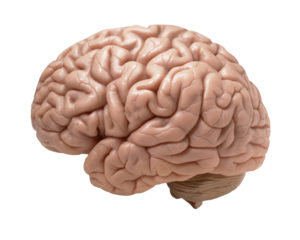 According to a recent large Swedish study, a healthy lifestyle lowers the risk of ischemic stroke (caused by a blood clot) - up to 54% lower risk. But unfortunately it does not lower the risk for a hemorrhagic stroke.
According to a recent large Swedish study, a healthy lifestyle lowers the risk of ischemic stroke (caused by a blood clot) - up to 54% lower risk. But unfortunately it does not lower the risk for a hemorrhagic stroke.
A healthy lifestyle was considered to be: healthy diet, moderate alcohol consumption, not smoking, being physically active, and being a normal weight (not overweight or obese). The more healthy life-style factors, the lower the risk for an ischemic stroke. In this study, healthy foods were considered to be: fruits, vegetables, legumes (beans), nuts, low-fat dairy foods, whole grain foods, and fish.
From Science Daily: Healthy lifestyle may cut stroke risk in half for women
Women with a healthy diet and lifestyle may be less likely to have a stroke by more than half, according to a study. The study looked at five factors that make up a healthy lifestyle: healthy diet; moderate alcohol consumption; never smoking; physically active; and healthy body mass index (BMI). Compared with women with none of the five healthy factors, women with all five factors had a 54-percent lower risk of stroke.
For the study, 31,696 Swedish women with an average age of about 60 completed a 350-item questionnaire about their diet and lifestyle. They were then followed for an average of 10 years. A healthy diet was defined as within the top 50 percent of a recommended food score measuring how often the participants ate healthy foods such as fruits, vegetables and low-fat dairy products. Moderate alcohol consumption was defined as three to nine drinks per week. Physically active was defined as walking or biking at least 40 minutes a day along with more vigorous exercise at least one hour per week. Healthy BMI was considered below 25.
Most of the women had two or three of the healthy factors. Only 589 women had all five healthy factors, and 1,535 had none. There were 1,554 strokes among study participants. The risk of stroke steadily decreased with each additional healthy lifestyle factor.
Women who had a healthier diet were 13 percent less likely to have a type of stroke called a cerebral infarction than those whose diet was not as healthy. Women with healthier diets had a rate of 28 strokes per 10,000 women per year compared to 43 strokes per 10,000 women per year among those with a less healthy diet.
Cerebral infarction is the most common cause of stroke, accounting for up to 80 to 85 percent of all strokes. Cerebral infarction is caused by a blockage in a blood vessel preventing blood and oxygen from getting to an area of the brain.
There was no relationship between the healthy factors and the risk of hemorrhagic stroke. Hemorrhagic stroke, which is caused by bleeding in and around the brain, accounts for about 15 to 20 percent of all strokes.

 Very exciting new way to use probiotics! Huge potential. From Science Daily:
Very exciting new way to use probiotics! Huge potential. From Science Daily: What if a doctor said you could avoid years of taking medication (and all their side effects and cost), better heart health, and avoid a heart attack by adopting some lifestyle changes. Could you do it? Would you? How to avoid 4 out 5 heart attacks, from Medical Xpress:
What if a doctor said you could avoid years of taking medication (and all their side effects and cost), better heart health, and avoid a heart attack by adopting some lifestyle changes. Could you do it? Would you? How to avoid 4 out 5 heart attacks, from Medical Xpress: